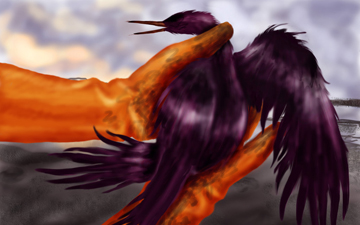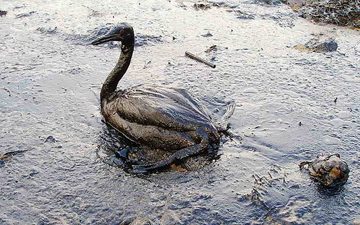An oil spill is the release of a liquid petroleum hydrocarbon into the environment due to human activity, and is a form of pollution. The term often refers to marine oil spills, where oil is released into the ocean or coastal waters. The oil may be a variety of materials, including crude oil, refined petroleum products (such as gasoline or diesel fuel) or by-products, ships‘ bunkers, oily refuse or oil mixed in waste. Spills take months or even years to clean up.[1] Oil also enters the marine environment from natural oil seeps.[2] Most human-made oil pollution comes from land-based activity, but public attention and regulation has tended to focus most sharply on seagoing oil tankers.
The oil penetrates up the structure of the plumage of birds, reducing its insulating ability, and so making the birds more vulnerable to temperature fluctuations and much less buoyant in the water. It also impairs birds’ flight abilities to forage and escape from predators. As they attempt to preen, birds typically ingest oil that covers their feathers, causing kidney damage, altered liver function, and digestive tract irritation. This and the limited foraging ability quickly causes dehydration and metabolic imbalances. Hormonal balance alteration including changes in luteinizing protein can also result in some birds exposed to petroleum.[3] Most birds affected by an oil spill die unless there is human intervention.[4][5] Marine mammals exposed to oil spills are affected in similar ways as seabirds. Oil coats the fur of Sea otters and seals, reducing its insulation abilities and leading to body temperature fluctuations and hypothermia. Ingestion of the oil causes dehydration and impaired digestions. Because oil floats on top of water, less sunlight penetrates into the water, limiting the photosynthesis of marine plants and phytoplankton. This, as well as decreasing the fauna populations, affects the food chain in the ecosystem.
(From Wikipedia, May 20th, 2010)



